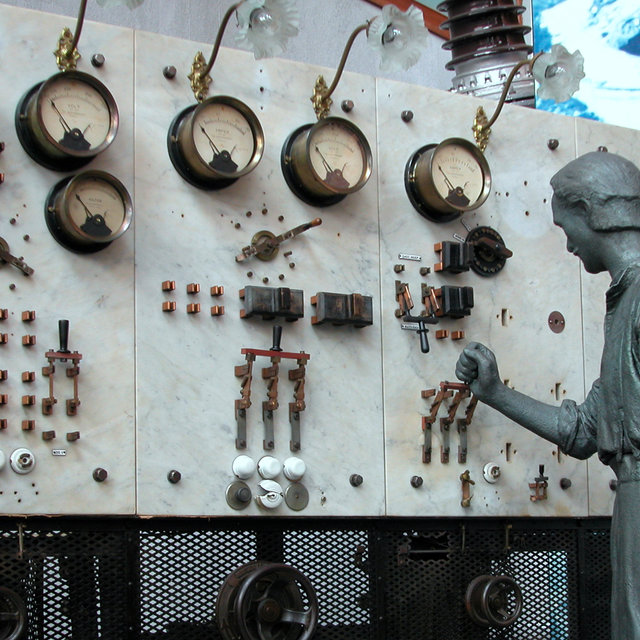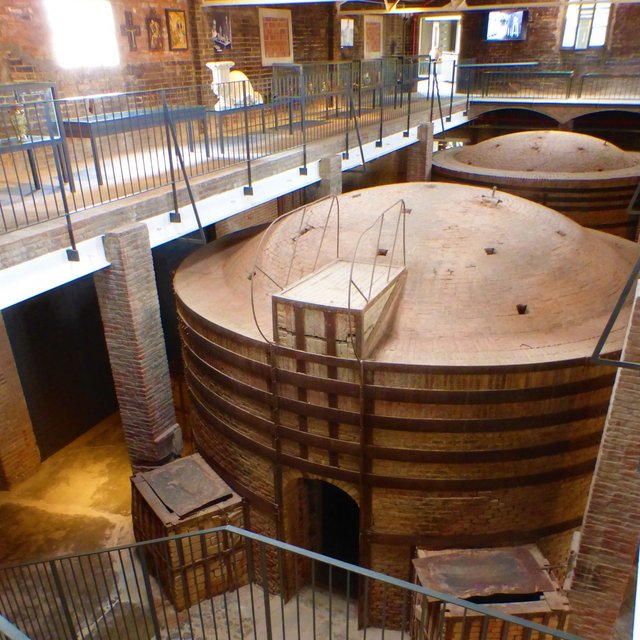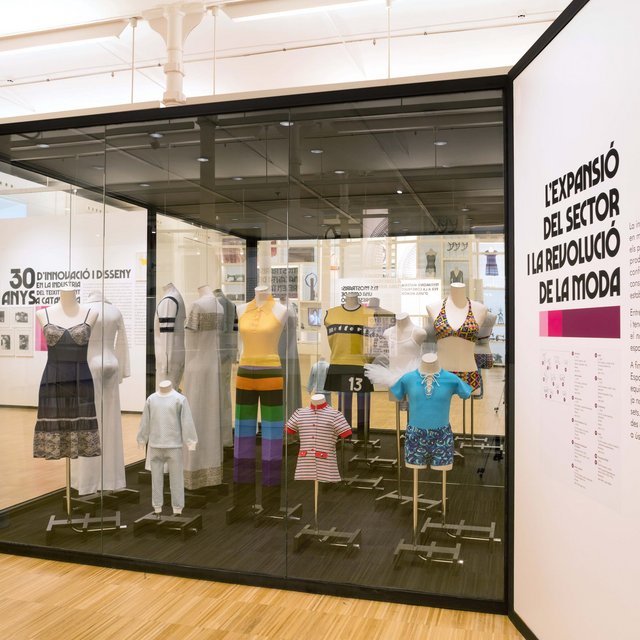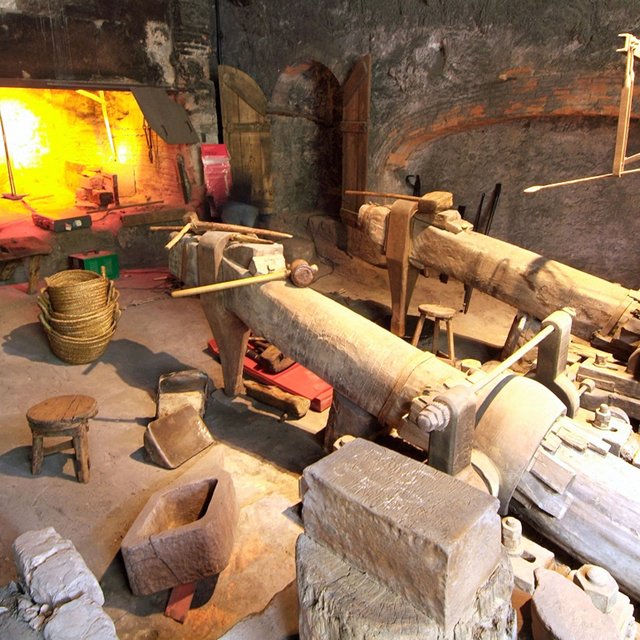Regional route Catalonia | Spain
One of Spain’s historically autonomous regions, Catalonia was one of the first industrialised regions in Europe and dominated by the textile industry. This has even made its way into the language. Vapor actually means steam, but Catalans use this word to describe a cloth factory. The first steam-powered ... more
Catalonia
One of Spain’s historically autonomous regions, Catalonia was one of the first industrialised regions in Europe and dominated by the textile industry. This has even made its way into the language. Vapor actually means steam, but Catalans use this word to describe a cloth factory.
The first steam-powered factory in Catalonia, a textile factory, was built in Barcelona in 1832. Until that point, the country had already experienced a development which contrasted greatly with the process of industrialisation in most other Mediterranean regions. Although this indicated a predominantly agricultural economy, trade and crafts had blossomed in Catalonia since the Middle Ages. Manufactured products included nails and small arms from Ripoll and high-quality paper from the mills around Capellades, but the strongest impetus for Catalonia’s industrial development sprang from chintz. Towards the end of the 18th century, Barcelona was intermittently Europe’s largest producer of this printed cotton fabric. By the mid-19th century, the Catalan cotton industry had climbed to third place worldwide, behind the United Kingdom and France.
Steam power quickly dominated transport as well. Spain’s first rail connection, between Barcelona and Mataró, was inaugurated in 1848. Difficulties in obtaining cheap coal to fire the steam-powered machines meant that water power was used in the new textile factories along the main river courses from the 1860s onwards. Although there were mining operations to some degree in Ogassa, Cercs and Berga, the lack of coal and iron ore prevented any significant metal-processing industry from developing. As a result, Catalonia as an industrial economy was geared solely towards the textile industry.
In the pre-industrial era, production sites such as grain, fulling and paper mills, forges, tanneries and similar were designed in line with the traditional architecture of the region and barely differed from typical farm buildings, Pyrenean mountain shacks or village houses with thick, stone or clay walls and tiled roofs.
With the advent of the Industrial Revolution, large spaces became necessary. The British example was followed and detached, multi-storey factory buildings were constructed with large windows to let in the light. However, it is modernisme, a Catalan form of art nouveau, which makes Catalonia’s industrial heritage so unmistakable. The architect Lluís Muncunill (1868-1931) was one of the most important representatives of this style and created a large number of industrial buildings. His “Vapor Aymerich, Amat i Jover”, built between 1907 and 1909 in Terrassa, is considered one of the more superb examples of European industrial architecture.

Please activate video Cookies in order to watch this video
ERIH Anchor Points
Museu Agbar de les Aigües
Museu Agbar de les Aigües
Ctra. de St. Boi, 4-6
08940
Cornellà de Llobregat, Spain
National Museum of Science and Technology of Catalonia
Museu Nacional de la Ciència i la Tècnica de Catalunya (MNACTEC)
Rambla d’Ègara 270
08221
Terrassa, Spain
Member Sites ERIH Association
Capdella Hydroelectric Museum
Museu Hidroelectric de Capdella
Avinguda dels Avets 1
25515
Capdella, Spain
Flour Milling Ecomuseum of Castelló d’Empúries
Ecomuseu-Farinera de Castelló d’Empúries
Carrer de Sant Francesc 5-7
17486
Castelló d’Empúries, Spain
Museum of the Sedó Colony in Esparreguera
Museu de la Colònia Sedó d'Esparreguera
Àrea Industrial Can Sedó, Calle Contínues
08292
Esparreguera, Spain
Gerri de la Sal Salt Museum
Museu de Gerri de la Sal
Square Àngel Esteve, s/n
25590
Gerri de la Sal, Spain
Roca Umbert Thermal Power Plant
La Tèrmica Roca Umbert
Prat de la Riba 77
08401
Granollers, Spain
Leather Museum and Anoia Regional Museum
Museu de la Pell d’Igualada i Comarcal de l’Anoia
Carrer del Dr Joan Mercader
08700
Igualada, Spain
Terracotta Museum of Ceramics
Terracota Museu de Ceràmica
Calle Sis d’ Octubre, 99
17100
La Bisbal d’Empordà, Spain
The Ter Museum
Museu del Ter
Plaça de les Dones del Ter 1
08560
Manlleu, Spain
Manresa Museum of Water and Textile
Museu de l'Aigua i el Tèxtil de Manresa
Carretera de Santpedor, 55
08242
Manresa, Spain
Can Marfà Knit Fabric: Museum of Mataró
Can Marfà Gènere de Punt: Museu de Mataró
Passatge de Can Marfà, 1
08301
Mataró, Spain
Railway Museum at Móra la Nova
Museu del Ferrocarril a Móra la Nova
Estació Renfe
43770
Móra la Nova, Spain
Cork Museum
Museu del Suro
Placeta del Museu del Suro
17200
Palafrugell, Spain
Palau Forge in Ripoll
Farga Palau de Ripoll
Passeig de la Farga Catalana 14-16
17500
Ripoll, Spain
Cercs Mining Museum
Museu de les Mines de Cercs
Plaça Sant Romà
08698
Sant Corneli, Spain
J. Trepat Factory Museum in Tàrrega
Museu Fàbrica J.Trepat de Tàrrega
Avinguda de Josep Trepat Galceran, 9
25300
Tàrrega, Spain
Catalonia Railway Museum
Museu del Ferrocarril de Catalunya
Plaça d'Eduard Maristany, s/n
08800
Vilanova i la Geltrú, Spain
Sites
Bellmunt del Priorat Mine Museum
Museu de les Mines Bellmunt del Priorat
Carretera de la Mina
43738
Bellmunt del Priorat, Spain
Capellades Paper Mill Museum
Museu-Moli Paperer de Cappelades
Pau Casal 10
08786
Capellades, Spain
Castellar de n’Hug Cement Museum
Museu del Ciment de Castellar de n’Hug
Paratge del Clot del Moro
08696
Castellar de n’Hug, Spain
La Rajoleta Ceramic Museum
Museu de Ceramica La Rajoleta
C. Esglèsia 36
08950
Esplugues de Llobregat, Spain
Museum of Oil of Catalunya
Museu de l’Oli de Catalunya
Plaça Joan Perucho 4
25177
La Granadella, Spain
Salvador Claret Automobile Collection
Col·lecció d’Automòbils Salvador Claret
Autovia A2, km 698 (sortida 697)
17410
Sils, Spain
Turnery Museum
Museu de la Torneria
Calle de la Pau 12-14
08570
Torelló, Spain


























